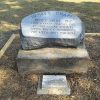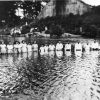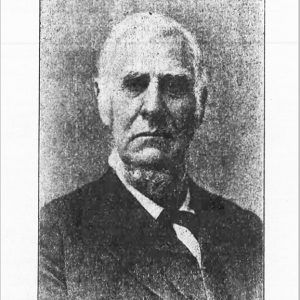calsfoundation@cals.org
Circuit Riders
During the eighteenth and nineteenth centuries, some ministers served multiple churches spread out over an area known as a circuit. In the nineteenth century, the practice of “circuit riding” was introduced to Arkansas. There were Baptist and Methodist circuit riders, but it was the Methodists in particular who used the term “circuit” to describe the area of service and whose denominational structures did the most to keep track of the work their riders did. The first Methodist circuit rider to enter Arkansas was William Stevenson, who probably entered northeastern Arkansas for the first time around 1809, during his work in the Illinois District of the Tennessee Conference. Stevenson, together with his brother James, began to travel through the settlements of Arkansas in 1813. Eli Lindsay set up the first Methodist circuit in Arkansas in 1815 in the region around Jesup (Lawrence County), but it was not until the next year that formal circuits were set up in Arkansas by the newly formed Missouri Conference.
The first formal Methodist circuits in Arkansas were the Spring River Circuit and the Hot Springs Circuit. The dividing line between them was at the Arkansas River. Even as the circuits were subdivided over the ensuing years, it could still take a month to cover the whole area. In some cases, a second rider was assigned to a circuit; in other cases, a single rider might find himself handling two circuits. For example, in the fall of 1829, Jerome C. Berryman traveled 600 miles to reach all his preaching appointments, which were spread between Hot Springs (Garland County) and Mound Prairie (Hempstead County) circuits. Appointments to a Methodist circuit were for a single year, and not all riders sought to extend that time. Those who did might work through a series of circuits over the course of several years; William Stevenson, for example, served for ten years as a circuit rider.
While traveling through their circuits, riders would hold regular meetings. Though some towns built log churches, circuit riders often held meetings in homes. Riders sometimes stayed in these homes for a few nights while they traveled through the area during the day. In addition to these regular services, which were often many weeks apart, riders coordinated larger “camp meetings,” which served as revivals. The camp meetings were highly emotional events, partly because the appeal to emotion was necessary at a time when neither riders nor congregants were well educated.
Not surprisingly, in such a rustic setting, payment was low. There were often complaints that the ministry did not pay enough to support a family. Salaries varied considerably, depending on the means of the communities within the circuit. Methodist conferences tried to set minimum salaries, but there were still variations among their riders, and riders were usually paid less than station preachers (those that had a fixed location from which to preach). For example, in 1846, Andrew Hunter at Little Rock Station made $200, while Alexander Avery in the Fayetteville Circuit made $100. Payment was sometimes “in kind” (food or supplies needed on the trail) rather than cash, since that was the easiest way for many settlers to compensate the riders. In Methodist circuits, the conference would try to cover any difference between what the riders received and what was considered the minimum necessary salary to live on.
Low pay was hardly the only difficulty the circuit riders faced. The “rough and ready” attitude of the frontier did not soften for preachers. In some cases, people picked fights with circuit riders, who sometimes fought back. Some circuit riders traveled armed, in order to prevent ruffians from breaking up their meetings. There were no roads in the early days of circuit riding in Arkansas (though Stevenson does mention horse paths), while rivers had to be crossed by horse or in small boats. This life was too rough for most to carry on indefinitely, and many eventually “located” (i.e., took up a fixed location in which to preach).
Over time, as some stops in a circuit became more heavily populated, communities gained the ability to support their own full-time preacher; sometimes a local (i.e., part-time) preacher would settle in the area. After 1830, there was an increased emphasis on education among the Methodist conferences. This resulted in more structured expressions of faith, rather than the emotionally charged preaching of the circuit riders. These factors, together with an increased tendency toward professionalization in denominational/associational structures, helped bring about the end of the circuit riders.
For additional information:
Anderson, James A. Centennial History of Arkansas Methodism. Benton, AR: L. B. White Printing Co., 1935.
Britton, Nancy. Two Centuries of Methodism in Arkansas. Little Rock: August House, 2000.
Hale, James E. Samuel David Akin: The Life of a Methodist Circuit Rider. Magnolia, AR: J. E. Hale, 2001.
Parman, Donald L. Window to a Changed World: The Personal Memoirs of William Graham. Indianapolis: Indiana Historical Society, 1998.
Vernon, Walter N. Methodism in Arkansas 1816–1976. Little Rock: Joint Committee for the History of Arkansas Methodism, 1976.
Michael Johnson
Northwest Arkansas Community College



 Andrew Hunter
Andrew Hunter 



Comments
No comments on this entry yet.